The Most Bizarre NBA Star Pairings Right Now
Dan Favale@@danfavaleThe Most Bizarre NBA Star Pairings Right Now

Not all NBA star partnerships make a ton of sense on paper—or, for that matter, on the court.
Where some marquee-name duos are battle-tested no-brainers, others are tougher to wrap your head around. They're questionable, ineffective or perhaps outright bizarre.
Falling into the latter category is not necessarily a terrible, irreversible thing. The term "bizarre" can have a negative connotation to it. In this case, we're mainly riffing about big-name pairings that are functional curiosities.
They could work out. They may even already be working out. But for whatever reason, they are also journeying off the beaten path, for better or worse.
Granted, not every inclusion here lands inside the "Odd but we sort of get it, and it may pan out long term" bucket. One or two or maybe three just outright don't pass the sniff test.
Does this mean those matchings should be busted up? That's for you—and their teams' front offices—to decide.
Rudy Gobert and Karl-Anthony Towns

This is an instance where "bizarre" does not mean hopeless. The Minnesota Timberwolves just made it to the Western Conference Finals with Rudy Gobert and Karl-Anthony Towns playing central roles.
For all of the hemming and hawing over their fit together, not only did Minny obliterate opponents with Gobert and Towns on the floor, but the dual-big arrangement held up during (limited) action without Anthony Edwards.
The lingering bizarreness is rooted in a lack of convention—and, yes, some enduring concerns.
Twin Tower models aren't obsolete, but they aren't exactly making a comeback, either. And no double-big arrangement comes close to mirroring the financial investment the Timberwolves have made in these two.
Gobert and Towns will earn a combined $93 million next season. That's almost two-thirds of the entire salary cap. Having this much equity committed to a pair of stars isn't uncommon, but it's rare in the sense that KAT and Gobert are both centers, and more uniquely, that neither of the Timberwolves' two highest paid players are their No. 1 option. (This says nothing of all that Minny gave up to land Gobert in the first place.)
Context is important. Edwards is about to start his second contract and can't earn as much as his running mates. But the bizarreness rages on when you consider that neither Gobert nor Towns profiles as the ideal second option.
That sentiment is a critique of KAT more than Gobert. The latter's job is to be a generational defensive anchor. Towns has the offensive package from the outside in to operate as a second primary option. Big men aren't supposed to move the way he does on the ball, and his shooting range remains anomalous for someone his size.
And yet, there's no denying the inconsistency ingrained into KAT's portfolio. The wild passes, the questionable shots and takeoff points inside the arc, the drives to nowhere that could have been threes, the protracted pockets of time in which he feels nonexistent—it's all sandwiched into the Karl-Anthony Towns experience.
Highs and lows are part and parcel of stardom. Nits are picked when you're under that kind of microscope. But in the quest to insulate Towns defensively, the Wolves have created an offensive environment that does not optimize their highest-paid player inside their most important lineups.
None of which is meant to be damning. Minnesota is making it work. Towns is making it work. And the trade for Rob Dillingham is clearly a long-term plan aimed at perfecting this dynamic.
That doesn't make this any less bizarre. The Timberwolves are simultaneously a stacked contender and substantially invested in a frontcourt that caters to their highest-paid player's weaknesses over his strengths.
Jarrett Allen and Evan Mobley
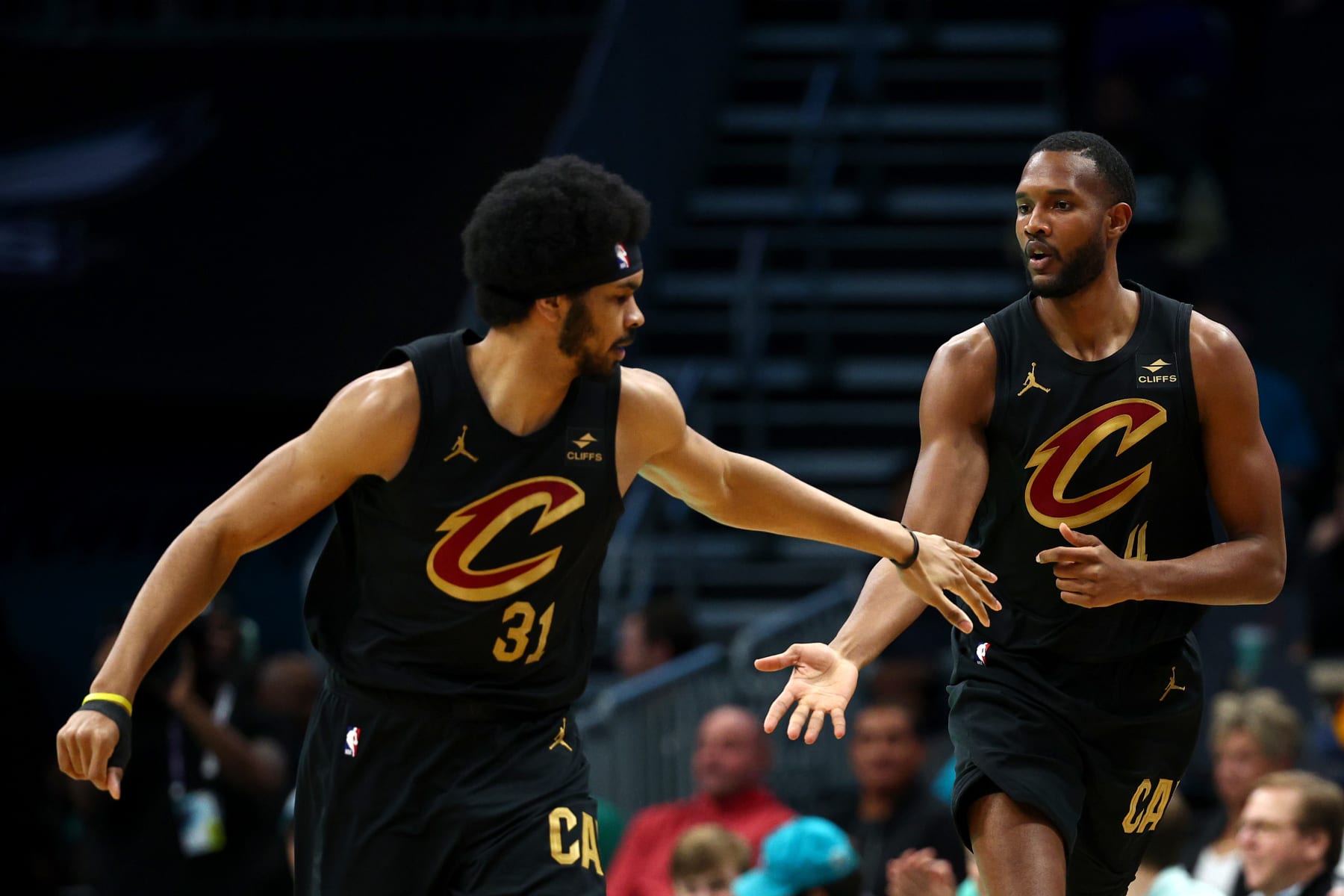
Friendly reminder: "Bizarre" doesn't always translate to "doomed."
Including two high-profile bigs in your primary core is not the nonconformist approach some make it out to be. It's been done. It's being done—in Minnesota, in Boston, in Oklahoma City, even in Denver, depending on how you feel about Aaron Gordon.
In all of those cases, though, at least one of the primary bigs qualifies as a floor-spacer. That's where the Jarrett Allen-Evan Mobley dynamic diverges most. (Mediocre rebounding returns are also up there.)
To his credit, Mobley started putting up more triples last season after returning from a left knee injury. His 41.4 percent clip above the break during that stretch is encouraging. But launching 1.8 treys per games for a little more than one-quarter of the season does not earn you the "floor-spacer" label. Especially when your efficiency craters in the playoffs.
The good news? Mobley is only 23. He has plenty of time to get better. And rest assured, he will get better.
There's also a chance last year was a blip. The Cleveland Cavaliers pumped in 119.3 points per 100 possessions (93rd percentile) during the 2022-23 campaign when Allen and Mobley shared the floor. That offensive rating plunged to 112.8 (36th percentile) in 2023-24. And it wasn't much better when you isolate the minutes played with both Darius Garland and Donovan Mitchell (113.6, 40th percentile).
Is this downswing the offshoot of stop-and-start availability at the top of the roster? Is it concerning? Could it be the cost of experimentation? (Allen assisted on 7.2 percent of Mobley's buckets, up from 5.1 percent in 2022-23. Mobley averaged 37.6 frontcourt touches per 36 minutes, up from 32.7 in 2022-23.)
It's likely a combination of everything. And Cleveland's Core Four has looked promising enough to keep it intact...for now. But it'd be foolish to believe this duo's success is guaranteed. It's easier to write off and stomach the ambiguity when caveats abound, and when neither player is expensive.
In all likelihood, this coming season is make-or-break. Mobley is due for a new deal in 2025-26, and Allen will be up for a raise in 2026-27. The Cavs need more offensive certainty from this duo if they're going to sustain it past next season—or even February's trade deadline.
DeMar DeRozan and Domantas Sabonis

Acquiring DeMar DeRozan in a sign-and-trade from the Chicago Bulls was a perfectly justifiable move for the Sacramento Kings. They needed another player to break down set defenses from the outside in, and even going on 35, DeRozan remains among the best in the league at dictating terms in the half court.
Still, the move is not without risk. DeRozan and Domantas Sabonis can prefer to occupy a lot of the same space, and neither is known as a shooter.
Sabonis canned 37.9 percent of his triples last year but barely attempted one per game. DeRozan has increased his volume from beyond the arc in recent years, but he drilled only 33.3 percent of his 225 long-range looks last season and has cleared 35 percent from distance just once.
Running actions with the both of them, along with staggering their minutes, should iron out some of the wrinkles. But the former mandates adjustments for De'Aaron Fox. And regardless of what shape the Kings offense takes during three-star stretches, it's going to require concessions.
DeRozan should be most hard-pressed to adapt. Over 65 percent of his looks went unassisted last year. While that's a lower share compared to Fox (67.5 percent), DeRozan didn't take as many catch-and-fire threes.
Ball and body movement can offset some of the functional overlap. Using Sabonis as a hub has a way of inciting both. I'm optimistic this pairing (and trio) pans out on the offensive end.
Defensively? Not so much. Stashing DeRozan on bigger forwards will work best with a rim protector. That's not Sabonis' M.O. Keegan Murray has developed into an operable helper around the basket, but the lift for himself, Fox and Keon Ellis will be massive.
Going this route is a fascinating pivot by Sacramento. It addresses certain needs while exacerbating others. Will this star pairing outperform expectations? Is it enough to keep pace in what figures to be an even more brutal Western Conference? Do the Kings have another move up their sleeve to optimize this fit and raise their ceiling?
Amid all the uncertainty, one thing's for sure: This team just got a lot more polarizing.
Brandon Ingram and Zion Williamson

For so long, the coupling of Brandon Ingram and Zion Williamson has survived on the coattails of caveats. They would be more harmonic if they were healthier, if Ingram fired more threes, if the New Orleans Pelicans just surrounded them with better shooters.
Certain lineup data floated hope. Especially in 2022-23, albeit in an incredibly limited sample size. Injuries demanded that hope persist, and that small samples be treated as profound evidence—as lifelines.
That notion was flipped on its head this past season. Absences from both were once again peppered into the equation, but Zion and Ingram played more than 2,200 possessions together, their most since 2020-21 (and second-most overall). New Orleans posted an unremarkable plus-2.2 net rating in those stints. And three of the four most-used pairings featuring BI and Williamson finished as net negatives.
Leaning into Point Zion looked best on the Pelicans. There were extended stretches in which Ingram seemed to be fitting inside that ecosystem. But even at their best, the two always felt as if they were leading separate existences. Ingram assisted on just over 9 percent of Zion's buckets. And Zion assisted on around 7 percent of Ingram's made baskets.
That dynamic, and the concerns it incites, aren't going away. As Shamit Dua wrote on his In The N.O. Substack:
"We saw Ingram's production take a sharp decline past the new year once the team started to shift towards Zion. From January 1st until his injury on March 21st, Ingram averaged 18.8 ppg, 5.3 rpg, 6.0 apg on below league average efficiency. The three point volume remained a paltry 3.6 per game. Mind you, this was the time he was described as buying into the 'little things.' This 'fitting in' version is not a max player, and it is not reasonable to expect better production next [season], when Murray will command the ball more."
Executive vice president of basketball operations David Griffin not surprisingly vowed to make changes over the offseason. And he has. Dejounte Murray is now in New Orleans. But that only complicates the future and fit of Ingram, who is eligible to sign a four-year, $207.8 million extension and is now on the trade block (with limited suitors), according to longtime NBA insider Marc Stein.
Between pressing financial realities and an on-court dynamic that's awkward at best, this is a duo destined for dissolution. It's just a matter of when. And how.
Bradley Beal, Devin Booker and Kevin Durant

We can't limit the Phoenix Suns' setup to just two stars. If you're a stickler for the interpretation of pairing (which is technically pretty broad), then go with Bradley Beal and Kevin Durant, since Devin Booker is the franchise tentpole who was already in place.
This trio is mega-talented. That much is inarguable. They are all above-average on-ball creators and off-ball threats relative to their status as, well, on-ball creators. But the functional imbalance they present is stark.
Booker is the closest one of them comes to being a primary playmaker. And as we saw time and again last season, that type of hierarchy has its limitations. Sure, Beal missed a ton of time. And Phoenix's supporting cast was not, shall we say, the most reliable. That's all sort of the point.
People take issue with the Beal trade. That's understandable. The Suns didn't have to make it. But they weren't getting a better player in a vacuum for what they could give up at the time. Even when filtering out team governor Mat Ishbia's impulsion and factoring in the hurdle posed by inheriting Beal's no-trade clause, his individual value exceeds what they gave up.
Any frustration about opportunity cost must zero in on the Durant acquisition. Phoenix forked over Mikal Bridges, Cam Johnson, four first-round picks and a 2028 first-round swap to get him. The price was, and remains, ultra-steep. Durant was 34 at the time and will be entering his age-36 season next year. The Suns winnowed down their prospective title window by converting long-term assets into someone with a shorter-than-longer superstar shelf life.
However! This is Kevin Durant. He remains a dominant offensive force, albeit one perhaps less equipped to handle double-teams.
The move seems riskier, if not less palatable, now than before. But it also remains defensible. KD gives you a championship best-case outcome, however plausible, right now. Those assets, or whomever else Phoenix punted on acquiring by moving them to Brooklyn, represent purely theoretical title windows.
Hence the bizarreness of this superstar trio. And it only gets zanier when you consider the aging Durant is the best defender of the tripling. (Booker has a case for stretches at a time.)
Weirder still, getting both Durant and Beal is to some extent about nudging up your ceiling when Booker catches a breather. However, the Durant-Beal tandem actually lost the minutes they logged without D-Book last season.
Can we chalk this up to Beal's initial absence setting back the chemistry? Flawed roster construction that's now semi-corrected? (Welcome to chaos, Monte Morris!) A not-so-stellar head coaching fit? (Godspeed, Mike Budenholzer!) Do these three just need more time to jell? How much time do they actually have?
"Bizarreness," in this instance, is an analog for a slew of questions without concrete answers.
Dan Favale covers the NBA for Bleacher Report. Follow him on Twitter (@danfavale), and subscribe to the Hardwood Knocks podcast, co-hosted by Bleacher Report's Grant Hughes.
Unless otherwise cited, stats courtesy of NBA.com, Basketball Reference, Stathead or Cleaning the Glass. Salary information via Spotrac. Draft-pick obligations via RealGM.
B/R Recommends

NBA Rumors: Karl-Anthony Towns Traded to Knicks; T-Wolves Get Julius Randle, More
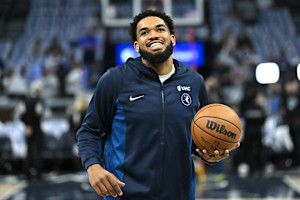
Grading Knicks-Timberwolves Trade That Swaps Karl-Anthony Towns, Julius Randle
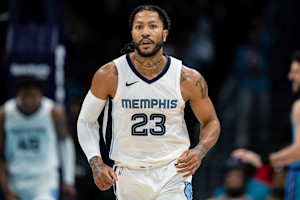
Derrick Rose Announces Retirement; Former NBA MVP Played for Bulls, Knicks, More

NBA Insider Adrian Wojnarowski Retires from ESPN, Will Become St. Bonaventure CBB GM
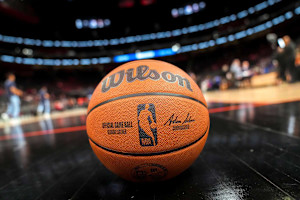
NBA City Edition Nike Jerseys for 2024-25 Season Reportedly Leaked in New Photos
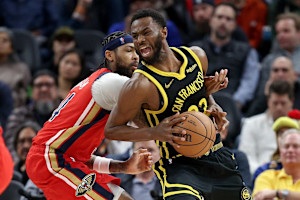
A 3-Team Trade Idea That Lands Brandon Ingram with Warriors, Wiggins with Blazers
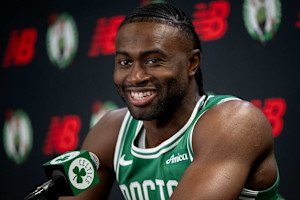
Video: Jaylen Brown Unveils Shaved Beard, New Look at Celtics' 2024-25 NBA Media Day

JJ Redick Reveals LeBron James, Lakers' Starting Lineup for 2024-25 NBA Season
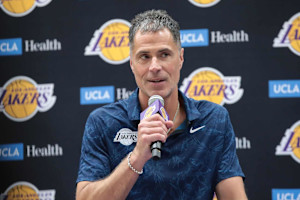
Lakers Open to Trading 2 Picks If It Leads to 'Sustainable' Excellence, Pelinka Says

Report: Ben Simmons, Joel Embiid Rank as Highest-Paid Players Per Game in NBA History



